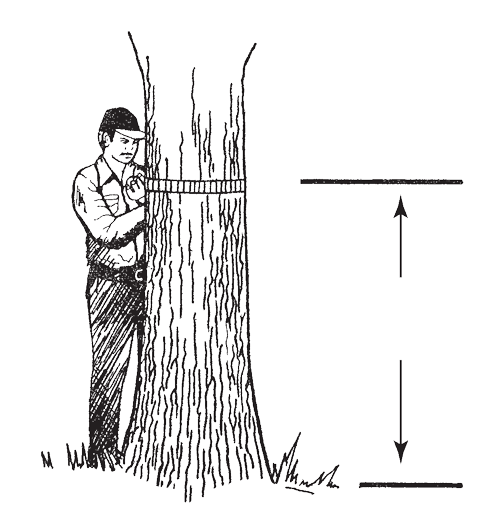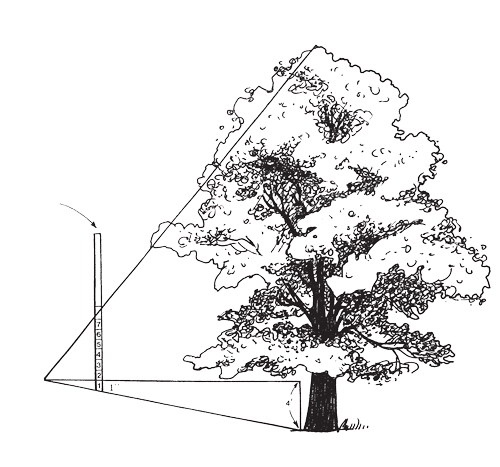Main Content
Article
How to Measure and Identify Big Trees

Data submitted should include:
- Common species name according to Deam’s “Trees of Indiana.”
- Scientific name, if known.
- County and Township where tree is located.
- Physical condition of tree when measured.
- Date measured.
- Map showing location of tree.
- Circumference, total height, average crown spread of tree.
- Owners name and address.
- Nominator’s name, address and phone number and date nominated.
- Landowner’s permission to submit entry.
- One or more photographs of tree.
CIRCUMFERENCE is measured at 4 1/2 feet above the ground. If the tree is on a slope, the measurement is taken from the uphill side of the tree. If the tree forks at or below the 4 1/2 feet point, or if a bulge occurs at this point, take the measurement at a location lower on the trunk where the tree resumes its normal size or taper. Record the number of inches around the tree by using a tape measure. Be sure tape measure is straight.

CROWN SPREAD is to be reported as the average distance from one side of the tree’s crown to the other as measured through the center of the tree. To take these needed measurements, walk beneath the tree checking to see where the crown is widest and also where most narrow. Once you have determined this, begin with the widest crown spread and mark the crown’s edge (or drip line) on the ground and proceed to the opposite side of the tree doing the same. Remember, the crown spread passes in a straight line through the center of the tree. Measure and record this distance and repeat the same procedure for the most narrow spread of the tree’s crown. To determine the average crown spread for your nomination, add the two measurements together and divide the sum by two.
TOTAL TREE HEIGHT is the distance from the ground’s high point at the tree’s base to the very top of the tree. A simple and quite accurate method of measuring tree height can be done with a yardstick. To do this, temporarily mark a spot 4 feet up from the base of the tree to serve as a sighting point for measuring tree height. A ribbon around the tree or masking tape may work well or have a friend hold his/her hand at a point 4 feet up on the tree’s trunk. Next, back away from the tree with the yardstick held straight up and down as if you were sighting straight up and down the tree. It is very important that your stick be held straight for an accurate measurement. Keep backing up (about 100 feet) until the 4 foot section you marked on the tree occupies exactly ONE INCH on your yardstick. Now, without moving your stick, site to the base of the tree and then to the top of the tree noting the number of inches the tree height occupies. Remembering that one inch on your yardstick equals four actual feet, multiply the measured tree height time four to determine the total tree height.

Total height of illustrated tree according to this method of measuring would be 28 feet. (7 x 4 = 28)
